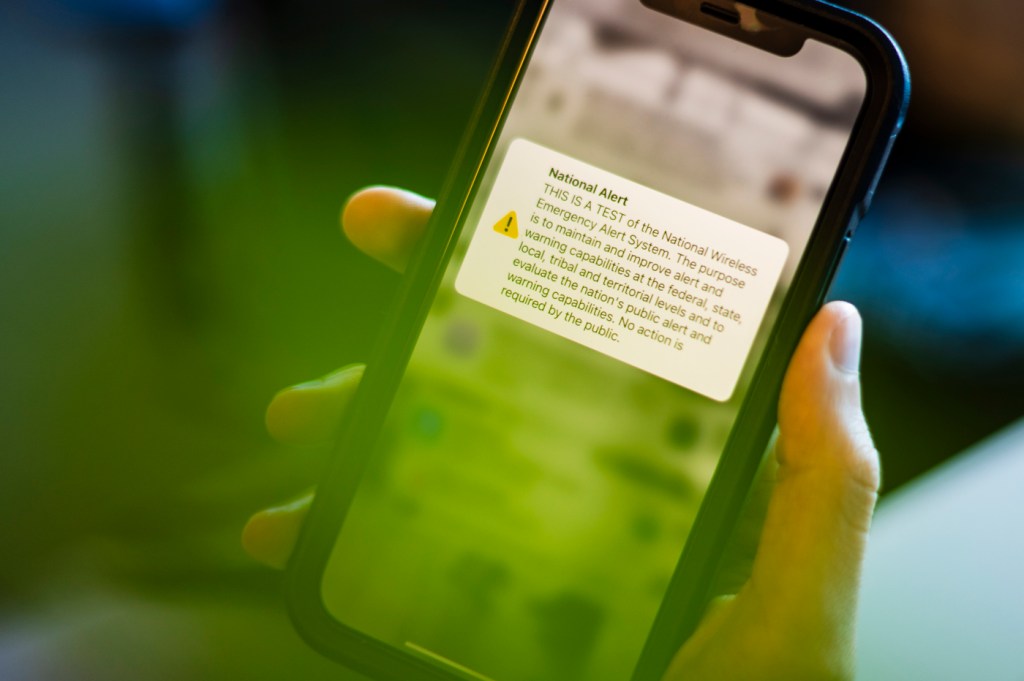Here’s why you received a national emergency alert on your phone — and what the Cold War has to do with it

You would have heard it if you were by yourself — and definitely if on the subway or at a restaurant: Wednesday’s test of the national emergency alert system.
The U.S. wireless providers that participated in the federal alert program sent alerts to their customers around 2:18 p.m. Eastern Time. At which point, phones might have blared, vibrated or massaged your outer thigh with a message of warning, though “no action” was to be required by the public, according to the message.
The test was conducted by the Federal Emergency Management Agency in concert with the Federal Communication Commission as a way to ensure systems are ready to alert the public in the event of an actual national emergency.
Stephen Flynn, professor of political science and founding director of the Global Resilience Institute at Northeastern, explains what the test meant and offers a brief history of the wireless emergency alert system. His comments have been edited for brevity and clarity.
For those of us not familiar with these emergency tests, can you give us some historical context?
The Emergency Alert System and the more recent Wireless Emergency Alert (WEA) has its roots in the early days of the Cold War, when there was a concern that the president would need a means to directly communicate to the American people in the event of an imminent Soviet attack on the United States involving nuclear weapons.

Thankfully it’s never needed to be activated for that purpose, and over time it has evolved primarily to support more localized use of providing early warnings of extreme weather — a tornado or a tsunami — where people need to either immediately seek shelter or evacuate.
We still live in a nuclear age where the possibility of a nuclear weapon being detonated is very low, but not zero. In the event of a nuclear incident, the safest action for most people who are not directly in the blast area will be to “go in and down”; i.e., to seek shelter as deep inside a building as you can get. This is the best way to avoid direct exposure to the dangerous radiation associated with the detonation of a nuclear weapon.
Are these tests truly life-saving measures in your view?
By taking shelter, the lives of tens of thousands could be saved, so having this information communicated to the public in time would be truly life-saving. So for this most extreme event, it is important to have an operational emergency alert system and now, since most of us rely on our wireless devices, to have the WEA as well.
Also, something we have looked at in my role as chair of the congressionally mandated National Academies committee on nuclear terrorism, is the added risk of dealing with a nuclear terrorism in our era of misinformation, disinformation and mal-information. Having a reliable source of life-saving information provided by the EAS and WEA is arguably becoming even more important today.
Tanner Stening is a Northeastern Global News reporter. Email him at t.stening@northeastern.edu. Follow him on Twitter @tstening90.






